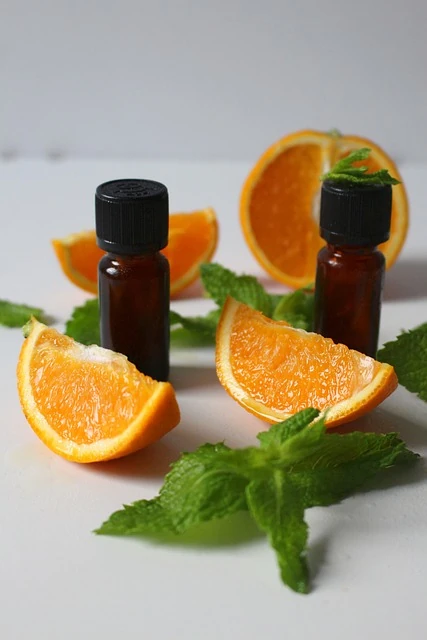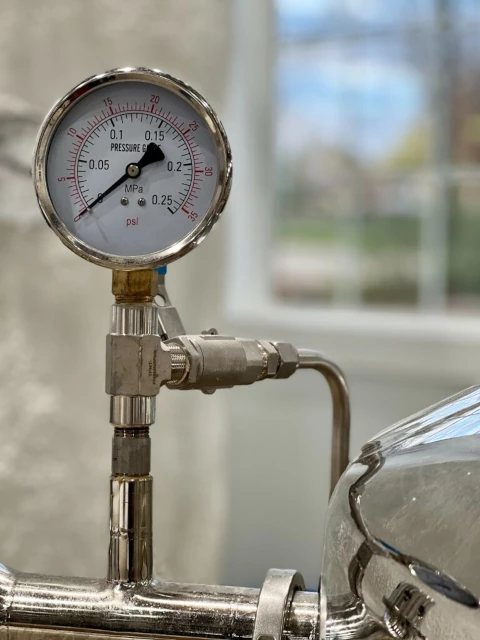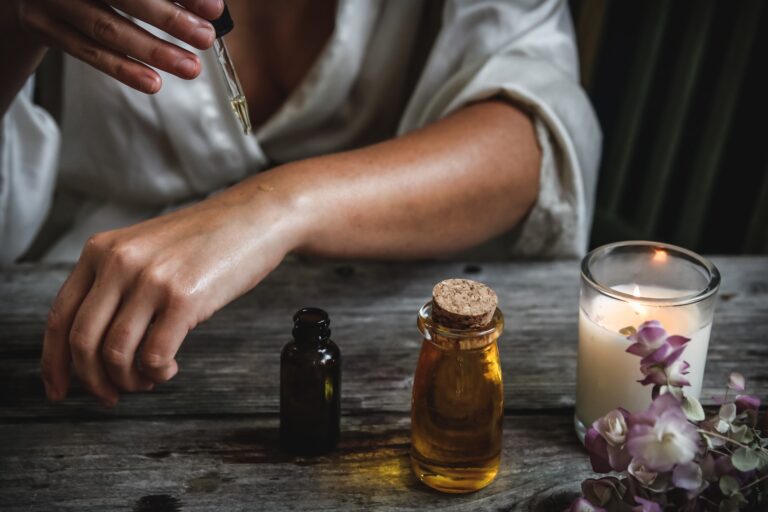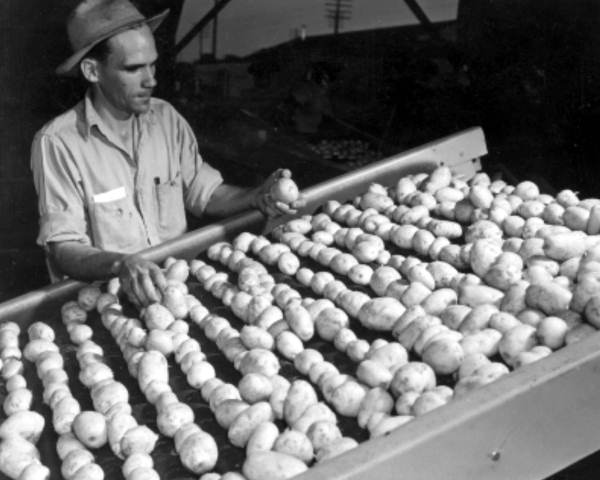Essential oils are concentrated extracts from plants, containing the natural scent and flavor of the plant. Essential oil distillation involves heating plant material and passing steam through it, causing the essential oil to evaporate. It is then condensed back into a liquid form. If you want to create high-quality pure essential oils at home, you need an oil distillation kit.
Essential oil distillation kits come with all the necessary equipment to perform the distillation process, including a distillation flask, condenser, heat source, and collection vessel. The benefits of using them include cost-effectiveness, the ability to create high-quality pure essential oils, and the ability to control the quality and quantity of the essential oils produced. But it can also be a hobby or educational for those interested in plants and natural remedies.
Benefits of Using an Essential Oil Distillation Kit
- Control over the quality: With an oil distillation kit, you have complete control over the quality of the essential oil produced. You can ensure that the oil is pure and free from any contaminants.
- Cost-effective: Buying essential oils can be expensive, especially if you use them frequently. With a distillation kit, you can create your essential oils at a fraction of the cost.
- Customizable: Using a distillation kit allows you to create your own unique blends of essential oils. You can mix and match different plant materials to create a custom scent or therapeutic blend.
- Fun and educational: Distilling essential oils can be a fun and educational hobby. It allows you to learn more about plants and their properties, and it can be a satisfying experience to create essential oils from scratch.
Different Types of Distillation Kits and Their Features
The various types of distillation methods used in essential oil extraction are:
1. Water Distillation: This is the most common method of distillation used for essential oil extraction. With this method, plant material is placed in a distillation flask with water and then heated. The steam produced is collected in a condenser and then separated from the essential oil.
2. Steam Distillation: In steam distillation, the plant material is placed in a separate chamber, and steam is introduced to it. The steam then carries the essential oil out of the plant material and into a condenser, where it is separated from the steam.
3. Water and steam Distillation: This method is similar to water distillation but uses higher pressure and temperature to speed up the process. The raw plant material is placed above the water on a perforated grid. The boiling water generates steam that extracts the essential oils.
4. Cold Press Extraction: This method is used mainly for citrus fruits and involves pressing the peel to release the essential oil. It is a simple method that doesn’t require any heat or special equipment.

The type of distillation method used depends on the type of plant material and the desired essential oil. Each method has its advantages and disadvantages and can produce different results in terms of the quality and quantity of essential oil produced.
How to Choose the Right Essential Oil Distiller for Your Needs
Different distillers are suited to different kinds of plants.
Water distillation is best for fragile plant materials. Delicate blossoms can clump together when introduced to steam in the distillation process. For them, the best way to extract their oil is to submerge them in pure boiling water instead. The water prevents the plant materials from overheating. However, reactions between certain chemical compounds present in the oils and the water can occur. Other compounds can dissolve in the water. Water distillation is the slowest distillation process, which often causes good-quality oil to be mixed with bad-quality oil.
Steam distillation is the most popular method. It produces very pure and clean oils and also allows for the collection of temperature-sensitive aromatic compounds. Unlike the simpler water distillation process, steam distillation involves a pressurized system. The pressure allows the distillation of oils well below their boiling point. This helps protect the chemical integrity of the oil and ensures the preservation of all the aromatic compounds.

Water and steam distillation yields more and better quality oil than water distillation. This process is also way more consistent than water distillation. It is also faster and more energy efficient. However, plant material can become wet, causing the process to be slower than steam distillation. This is due to the extra water that the steam has to vaporize.
Cold Press Extraction is used when the essential oils cannot be extracted by other means. This is usually the case for citrus fruits whose oils are present in the peel. In this case, a pressing action is required for the oil to be released from the oil glands located within the outer portion of the peel.
How to use an Essential Oil Distiller?
1. Choose the plant material: Select the plant material you want to use for distillation. It’s important to use fresh, high-quality plant material for the best results.
2. Load the distillation flask: Place the plant material in the distillation flask, along with enough water to cover the plant material.
3. Heat the flask: Heat the distillation flask over a heat source, such as a hot plate or stove. The water will begin to boil, causing steam to pass through the plant material and extract the essential oil.
4. Collect the essential oil: As the steam passes through the plant material, it will carry the essential oil with it. The steam will then pass through a condenser, where it will cool and condense into a liquid form. The essential oil will collect in the collection vessel.
5. Separate the oil and water: Once the distillation is complete, you’ll need to separate the essential oil from the water. This can be done using a separatory funnel or by allowing the oil to rise to the surface and skimming it off.
Once the setup is in place, essential oil distillation is a very straightforward process. But be mindful of the type of distiller kit used as the results can significantly vary from one process to the next.
How to care for your Distillation Kit?
Proper maintenance and cleaning can ensure that your kit continues to produce high-quality essential oils and lasts for years to come. Here are some tips:
1. Clean after each use: After each distillation, it’s important to clean your kit thoroughly. This will prevent any residue from building up and affecting the quality of future distillations.
2. Use the right cleaning materials: Use gentle, non-abrasive cleaning materials to avoid scratching or damaging the components of your kit. Mild soap and water are usually sufficient measures for cleaning.
3. Store properly: When not in use, store your kit in a dry, cool place. Avoid storing it in direct sunlight or in humid environments, which can damage the components.
4. Replace parts as needed: Over time, certain parts of your kit may wear out or become damaged. It’s important to replace these parts promptly to ensure the quality of your distillations.
By following these tips for maintaining and cleaning your distillation kit, you can ensure that your kit continues to produce high-quality essential oils for years to come.
Maintenance and Care Tips for Your Distillation Kit
Distillation involves heating water and plant material, which can be potentially dangerous if not handled properly. Here are several safety precautions to keep in mind:
1. Proper ventilation: Distillation produces steam, which can fill up the room quickly. Ensure proper ventilation to prevent steam build-up and the accumulation of too many fumes.
2. Careful handling: Be cautious when handling hot glassware, as it can break easily and cause injury.
3. Proper heat source: Ensure that the heat source you’re using is appropriate for the distillation apparatus. Never use a heat source that is too large or unstable, as this can cause the device to tip over and spill.
4. Watch for leaks: Regularly check for leaks in the apparatus to prevent the escape of steam.
If you follow these safety precautions, you can minimize the risk of injury or damage while using your distillation kit.
Frequently Asked Questions About Essential Oil Distillation Kit
Here are the eleven most frequently asked questions about oil distillation kits, along with their answers:
1. What is an essential oil distillation kit?
An essential oil distillation kit is a set of tools and equipment used to extract essential oils from plant materials.
2. How does an essential oil distillation kit work?
Essential oil distillation kit works by heating water and plant material in a distillation flask, causing steam to pass through the plant material and extract the essential oil. The steam then passes through a condenser, where it cools and condenses into a liquid form. The essential oil is then collected in a collection vessel.
3. What are the benefits of using an essential oil distillation kit?
Using an essential oil distillation kit allows you to extract high-quality, pure essential oils from plant materials. This is a more natural and sustainable way to obtain essential oils compared to purchasing pre-made oils.
4. What types of plant materials can be used with an essential oil distillation kit?
A wide variety of plant materials can be used with an essential oil distillation kit, including herbs, flowers, roots, and even citrus peels.
5. How long does it take to distill essential oils with an essential oil distillation kit?
The time it takes to distill essential oils with an essential oil distillation kit can vary depending on the type of plant material you use and the quantity being distilled. Generally, it can take anywhere from 30 minutes to several hours.
6. What is the yield of essential oils from a distillation kit?
The yield of essential oils from an essential oil distillation kit can vary depending on the type of plant material being used, but generally, you can expect a yield of 1-2% of the total weight of the plant material being distilled.
7. Can an essential oil distillation kit be used to make perfumes?
Yes, an essential oil distillation kit can be used to make perfumes. By combining different essential oils, you can create a unique fragrance that can be used as a perfume.
8. Can a distillation kit be used for commercial purposes?
Yes, an essential oil distillation kit can be used for commercial purposes. However, it’s important to check local laws and regulations regarding the sale of essential oils before starting a commercial operation.
9. How do I clean my essential oil distillation kit?
To clean your essential oil distillation kit, simply use mild soap and water. Be sure to clean the kit thoroughly after each use to prevent any residue from building up and affecting the quality of future distillations.
10. What safety precautions should I take when using a distillation kit?
When using an essential oil distillation kit, it’s important to take any measures to prevent accidental burns. Ensure proper ventilation to prevent steam build-up and the accumulation of potentially hazardous fumes from the heating source.
Be cautious when handling hot glassware, and regularly check for leaks in the apparatus to prevent the escape of steam.
11. What types of plants can be used with a distillation kit?
Not all plants are suitable for essential oil distillation, so it’s important to know which plants are best to use.
Here are some common plants that can be used with a distillation kit:
– Lavender: One of the most popular plants for essential oil distillation, lavender produces a sweet, floral scent that is commonly used for relaxation and stress relief.
– Eucalyptus: Eucalyptus is known for its refreshing and invigorating scent. It’s commonly used to relieve congestion and respiratory issues.
– Peppermint: Peppermint produces a refreshing, minty scent that is commonly used for mental clarity and focus.
– Rosemary: Rosemary has a woody, herbal scent that is commonly used for mental clarity and relaxation.
– Lemon: Lemon produces a fresh, citrusy scent that is commonly used for its uplifting and energizing properties.
Overall, many different plants can be used with a distillation kit. It’s important to choose plants that are high in essential oil content for the best results.






